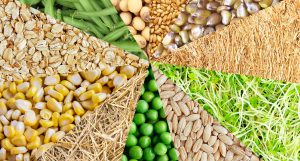
All the talk about genetically modified food now begs the question of how it affects people and the environment. Although widely debated about, scientists have not been able to come up with conclusive results as to if genetic modification is inherently good or bad. In this portion of the bog, we will be addressing a few main implications on humans and the environment.
Implications on Humans
Genetically engineered plants can be both beneficial and harmful to humans in the long run. We will start by looking at the benefits that humans can derive from genetically engineered crops.
Certain crops are susceptible to pests resulting in the increased use of pesticides to combat the problem of pests ruining crops. However, the increased use of pesticides will result in health problems in humans, especially among infants and children. With the use of Genetically Modified (GM) crops, the reliance on pesticides can be reduced greatly as crops can be modified to be pest resistant.
In addition to the problem of pests, agriculture in developing countries face the problem of crop failures due to extreme weather events. With genetic modification crops can be modified to be more resistant to naturally occurring events that are likely to harm crops. This will greatly improve yield for farmers. In addition, with recent climate change likely to affect agriculture yield, GM crops will be able to prevent a food shortage.
In developing countries where food that can be obtained at a lower price or at a lower proximity is consumed, there is a high incidence of certain vitamin/mineral deficiencies. In such cases, crops that are produced in abundance such as rice can be modified to contain the required vitamins. This way, the necessary vitamins can be delivered to the population suffering from health problems due to a lack of proper nutrition in a cheap and accessible manner.
Moving on to the risks. One of the key risks of GM crops are possible contamination of other unmodified plants with the GM crops. This risk usually arises due to the pharmaceutical production in food crop species. These “pharma crops” are grown according to stringent protocols designed to prevent contamination with other food supply. After the harvest of such “pharma crops” must be labelled and tracked to avoid any potential mix-ups with crops that are destined for human or livestock consumption. However, recently human errors in dealing with GM crops have resulted in contamination of the food supply.
Antibiotic resistance is the other key risk in the usage of GM crops. This is due to the use of antibiotic resistance genes as markers in GM crops. These genes can eventually be transferred to the bacteria living in the livestock or human gut, leading to diseases that are difficult to treat with the current antibiotics. Although there is no significant scientific evidence of such gene transfer, this will still be a significant risk to humans due to the resulting health impact in the long run.
Implications on environment
- Horizontal gene flow is one of the positive impacts in the environment. This is where gene transfer happens when a pollen grain from a cultivated species pollinates the wild relative of that plant. While it creates hybrids that are advantageous for the agricultural sector, it would create series that do not thrive in the wild. This is not necessarily a harm because when gene flow occurs, only the cultivated species will survive and the plants with undesired genes do not. Furthermore, plants are being developed to prevent gene flow so that they can be cultivated for specific uses and the unwanted hybrids would not affect their growth.
2. Some plants carry a specific “BT” gene which produces a harmful toxin that kills pests who eat them but are not harmful to others such as humans. It is known as a natural insecticide but however carries it own set of concerns for the environment. The monarch butterfly, an important species, risks being kill off because of this gene in plants.(Saxena & Stotzky, 2000) However, this is still something widely debated about as the results of studies on this have been inconclusive. Hence, scientists are keeping an eye out for this gene incase it potentially harms beneficial species in a bid to kill off harmful species.
3. At the same time, through genetic modification we can create breeds of crops that are able to withstand severe weather conditions. What this does is limits how much of irrigation is required and will reduce the dependancy on natural water resources in countries that already lack natural water resources.
References
http://www.jbiomeds.com/biomedical-sciences/human-social-and-environmental-impacts-of-human-genetic-engineering.php?aid=7264
http://www.chgeharvard.org/resource/human-health-implications-genetically-modified-crops-excerpt-sustaining-life
Saxena, D & Stotzky, G. (2000). “Bacillus thuringiensis (Bt) toxin released from root exudates and biomass of Bt corn has no apparent effect on earthworms, nematodes, protozoa, bacteria, and fungi in soil” (PDF). Soil Biology & Biochemistry. 33: 1225–1230.